I was musing over a whole lot of plants in a nursery all labelled cymbiformis and ignoring the formal classification and recognition of varieties. Gordon Rowley was very critical of my work because he felt that the lesser names were just being dumped. I agree that it is a problem and I was thinking of posting pictures that would facilitate the use of old existing names e.g. planifolia. I was very quickly disenchanted as I looked for pictures.
The field situation regarding cooperi and cymbiformis is as complex as the retusa/turgida/mirabilis/emelyae/pygmaea/mutica issue as well as the fact that each such species assemblage runs over in to still other species. I did google cymbiformis and planifolia to see what the internet had to offer and was amazed how poor and confusing that is. I welcome any questions that cooking up an answer for, may help rationalise and enlighten troubled minds.
The picture is from one population at Kaboega where it is evident to me that there is no distinction between cymbiformis and cooperi, and it gets worse.

There is a problem with the name obtusa as a variant of H. cymbiformis, and I think it, with the name translucence, that really covers the transition between cymbiformis and cooperi. Both those names obtusa and translucens can be applied to a large number of populations that belong in a twilight zone of neither “this nor that”. As I was pondering the other day, plant taxonomy is NOT good science. It is largely treated as a field for nomenclatural rules and recommendations and a stage for intellectual display. There is little connection between the minutae of nomenclature and the reality of what occurs in nature. These pictures are of plants in the Bosberg NE Somerset East and are in a geographical cooperi environment far from the range of cymbiformis. They could fit the concept of “obtusa” as so many other cooperoids do.
Let me add – cymbiformis are those green things that grow as clump formers on steep (rock faces, cooperi are those bluish plants that grow solitarily on the flat. They are the same!!! The names are just at the extremities and the more we know the more names we need??
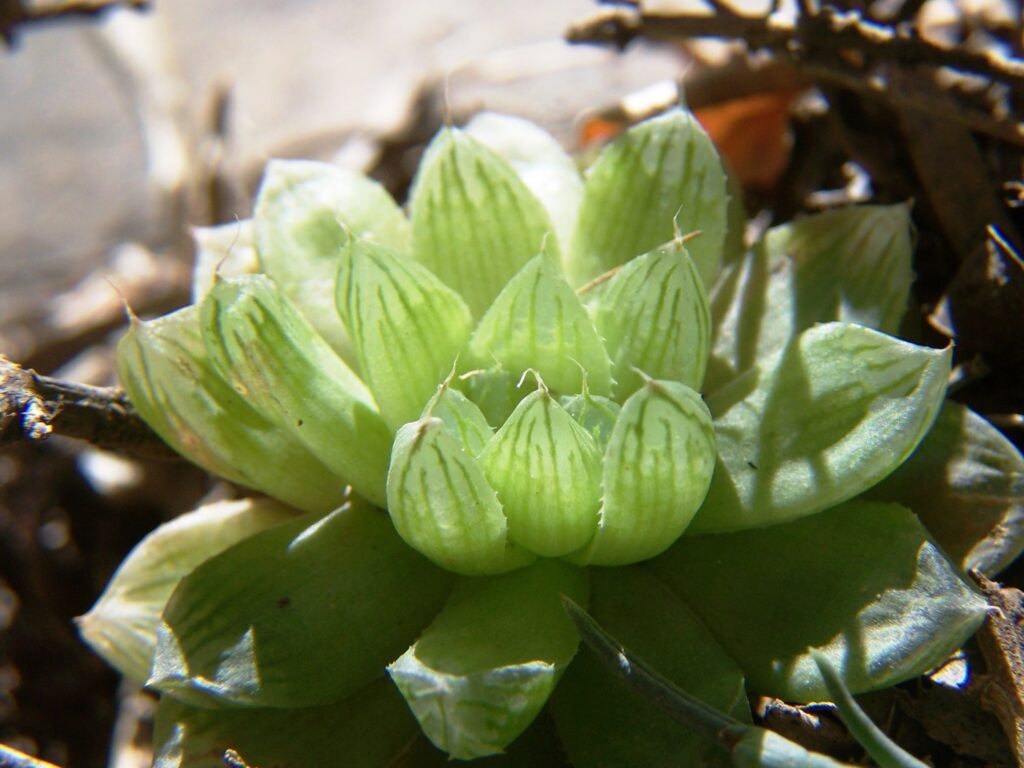
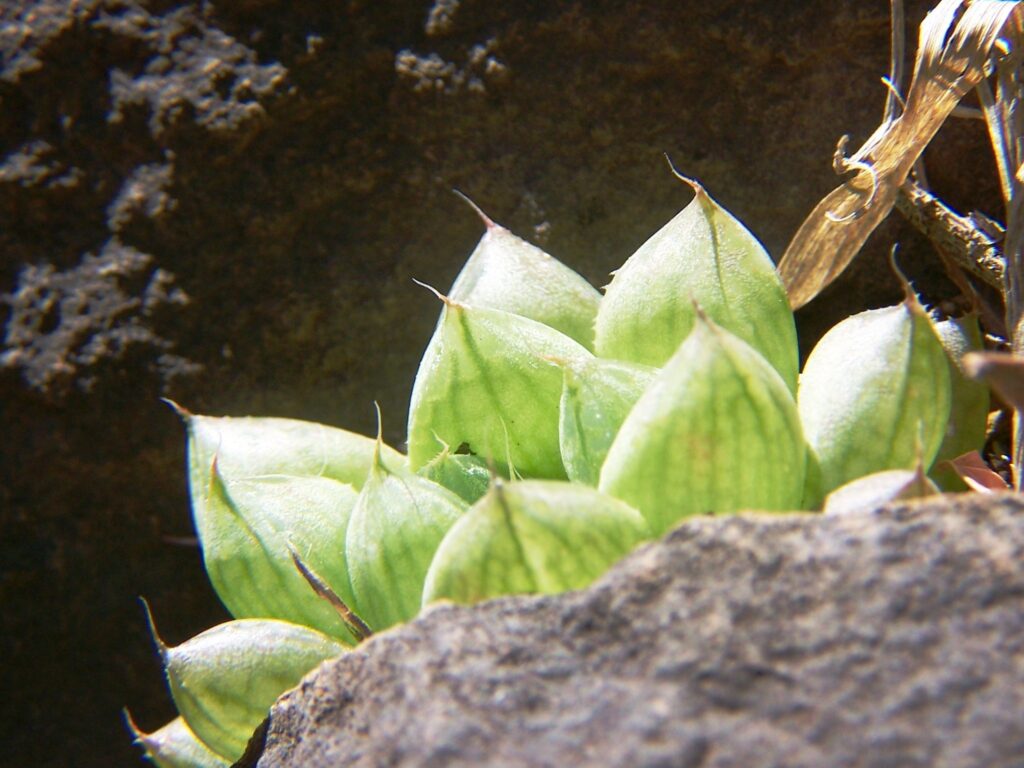
When I posted those two items about cooper and cymbiformis, I had left gracilis somewhere in the closet. It is just a very difficult pill to swallow that all these amazing variants have (?) to be lumped under one species.
I had another look at the 3 DNA phyllograms in the work by Manning et al, and it can be noted that cooperi, cymbiformis and decipiens all see to pan out in the same lineage. So as I said it is far worse than imagined – although there are some improbables in the various lineages of the phyllograms. But this is just as far as sequencing has got and we have yet to see results from “next generation sequencing”. Here are two images of cooperi from different populations west of Uniondale pass that shocked even myself in saying they are the same species.
Many years ago you gave me a challenge to sort out the cymbiformis cooperi and so off I went to the Eastern Cape; many times. I didn’t understand then how plastic, how variable, the plants were and how rigid the names and descriptions. Some I couldn’t type.
Cymbiformis – Rosette to 130mm φ, partially stemmed, proliferous. Leaves broad ovate to lanceolate, flat to slightly concave, generally <1/3 as thick as wide, usually opaque, green turning yellowish to pink hued on exposure. Inflorescence to 250mm, 10-15 flowers, lax. Flowers white.
Cooperi – Rosette to 120mm φ, often proliferous, stemless. Leaves 20-40, fleshy, swollen, oblong-lanceolate, quickly tapering, acuminate or truncating, marginal spines <2mm long if present. Bluish-green in colour, slightly translucent, with veins usually reddening and leaves developing purplish hues in exposed situations. Inflorescence compact, firm peduncle with many closely arranged flowers, to 20cm long. Flowers 20-30, perianth white.
Maybe it’s time to come back for more field work.Lawrence Loucka
Yes writing those descriptions was a really funny experience but actually they are remarkably as good as you can get. Cooperi is only distinguishable from cymbiformis by colour, inflorescence and habitat. So what do you do with all those other populations that fall in the small cracks between. The “fieldwork” necessary to establish a workable boundary is to weed out the vast majority of plants that will not fit these artificial strictures of botanical classification and nomenclature. And just what is this stuff we weirdly say is “fieldwork”?
Really! I put it best I think in Update Vol 2 or 3 where I wrote about the need for a starting hypothesis for field work and reporting. I can tell you right now what more unplanned field work will produce – more names and more confusion. I have shown time and again that planned field work shows the interconnectedness of all these “species” we so anxiously claim. But we are also very limited by our perceptions and our expectations. We are taught mechanistically and we are not taught about the illusion of time and space or what reality is or might be. We do not live in a finite fixed world that is the same for each of us. We live within our own perceptions and dreams of what we think is real? We work with definitions of words and things and if we do not agree with each other on these, we will not understand each other. The word “species” is the great catch point hen it comes to biology. Science presently defines it for us by default, as a measure of the similarity of DNA in some sort of sampling (ill-defined and inadequate) process. This is going to create serious problems into the future. The polymath who asked plant taxonomists if they knew what they are doing, is going to have his doubts proven too right – they do not.Bruce Bayer

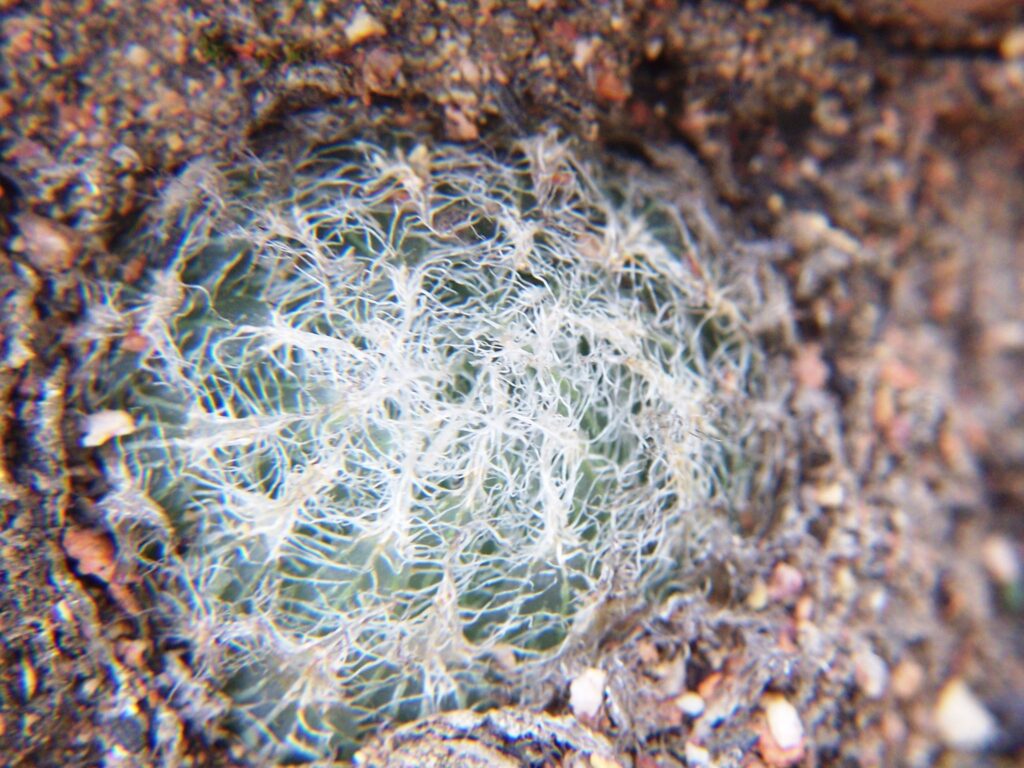
I am always on about definition, usually of “species”, but checking up some DNA information reveals that even things such as nucleotides, DNA, and what-not are not actually adequately defined. DNA is said in some meanings, to be the nucleotide chains in the cell nucleus. The nucleotides are said to be the four amino-acids that link the paired strands in the chromosomes. But how are the strands constructed?
Then there are different molecular combinations effectively forming short strands in all tissues and these are also referred to as DNA. The Haworthia sequencing used to establish the recent changes within the aloids is based on up to 7 molecular regions, some of nuclear DNA and some on extra-cellular DNA. It bothers me that the sequencing does not actually tell me very much that I was not aware of simple observing the plants. But I see things in each of the phyllograms for the different regions that persuade me that we have a LOT to learn about DNA sequencing. The lineages for each region are not the same and there are some very weird anomalies that people who do not know the species are clearly not aware of. If they were they would be less confident in their conclusions and their faith in the technology (as it stands to date).
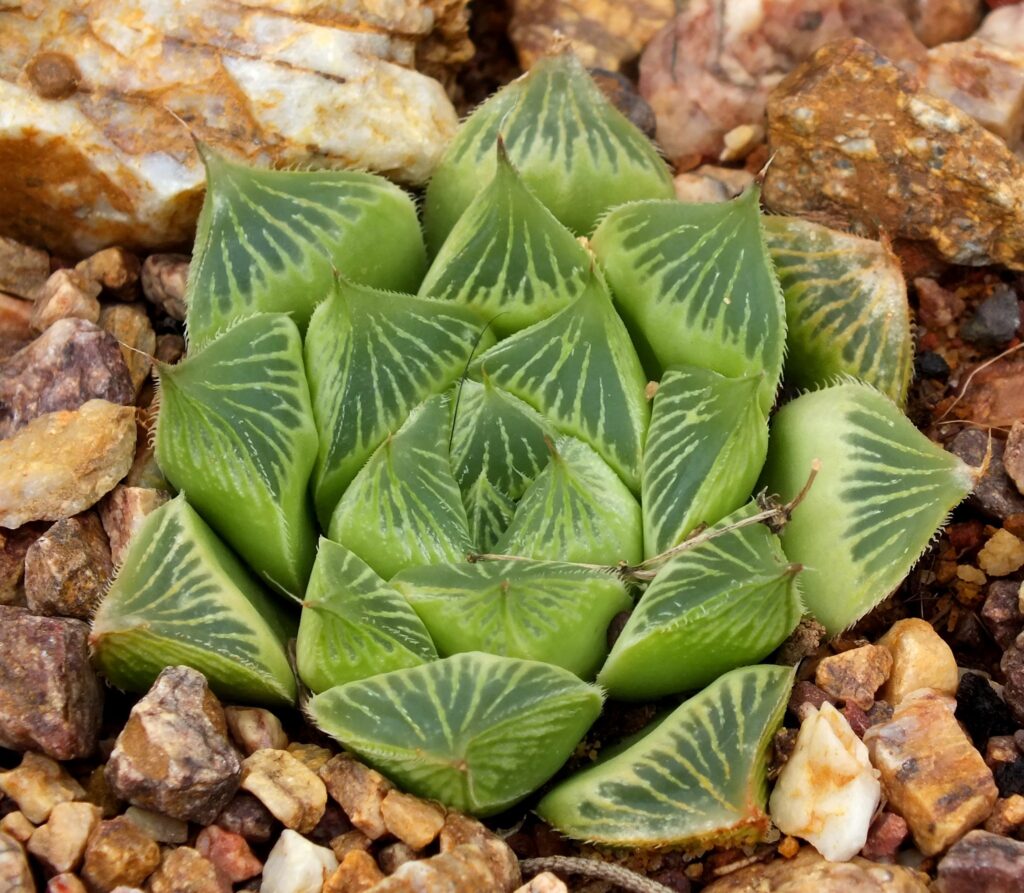
Glad that Lawrence posted that DNA paper Manning et al, because those interested can now see the phyllograms and make up their own minds about what they tell us. My personal experience makes me highly suspicious of all this stuff as even in the paper the authors say they opine that the results give a reliable overview – despite limited sampling and despite the variations in the different lineages the phyllograms illustrate. I would actually like to see phyllograms for each of the 5 DNA regions as well as concatenated ones, for just H. floribunda sampled from many populations. also not just single specimens from each population.
Here we have a case where the plastid sequences do not agree with the nuclear. I also do not like using both regional sequences AND concatenated results. Either concatenation is better or it is not. It seems like the statistical ploy viz. if a test does not give you significance, you keep using different statistical tests until you get one that does. The most critical element is that while these results are used to arrive at a generic classification in the aloids, the exercise was initiated to examine the species relationships in Haworthia only. Had that initial intention been observed (using 3 specimens per population) it could have made a really significant contribution instead of leaving us all in vacuum of opinion and belief.
My present view is that classification has devolved into an intellectual exercise that perpetuates confusion and uncertainty, ensuring endless name changes! Posted (above) is a nice retusaXcooperi ‘venusta‘ hybrid. It does not darken when exposed to direct day-long sunlight.
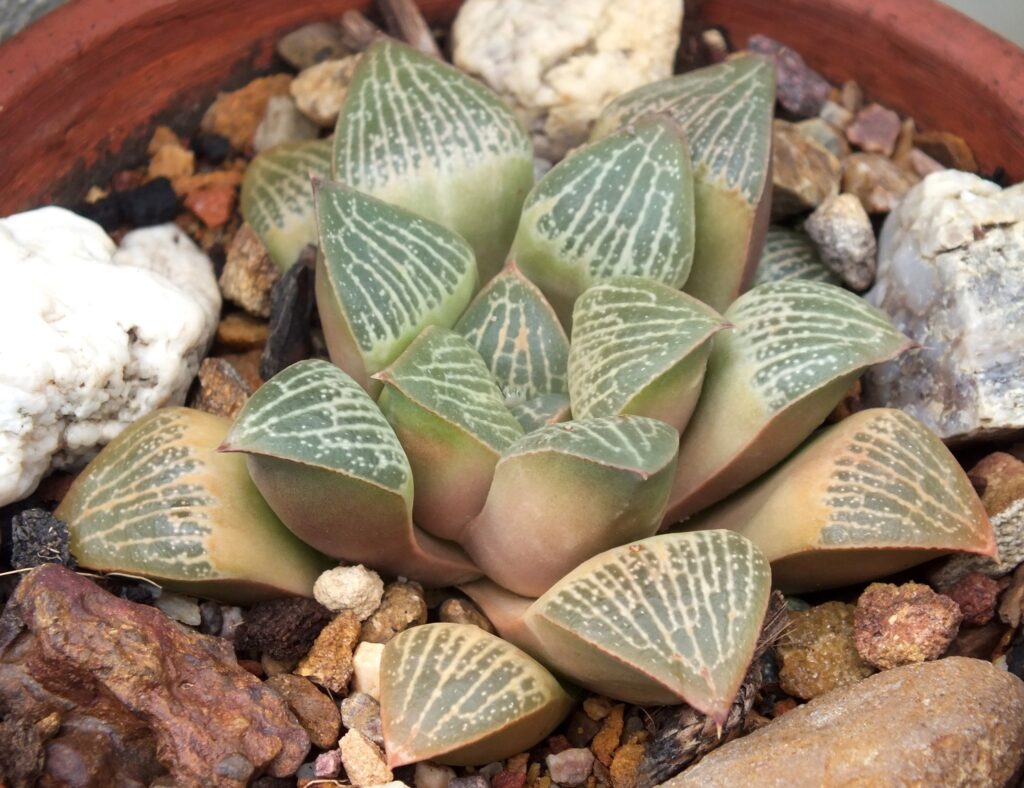
It is interesting to look at the DNA lineages for H. marxii, H. semiviva, H. pulchella var. globifera. H. mutica and H. marumiana var. archeri. They are, in the three data sets, very conflicting. For me highlight the problem of sequencing where sampling is so limited and based on an identification or classification process itself not based on sequencing. Particularly so when the original intention of the project was to examine that very problem.
This might have been called Haworthia dekenah var. argenteo-maculosa! In my opinion all the retusoids east of the Gouritz river are referable to H. pygmaea. But the truth is that one cannot separate retusa, turgida, mutica, mirabilis, pygmea or even emelyae on the basis of any physically observable evidence.
Indeed there is a problem with correct and consistent naming. The fact is that it can be much like pinning the tail on the donkey. It is all very well having a nomenclatural system that can be a juristic nightmare and an intellectual challenge, but does it work?
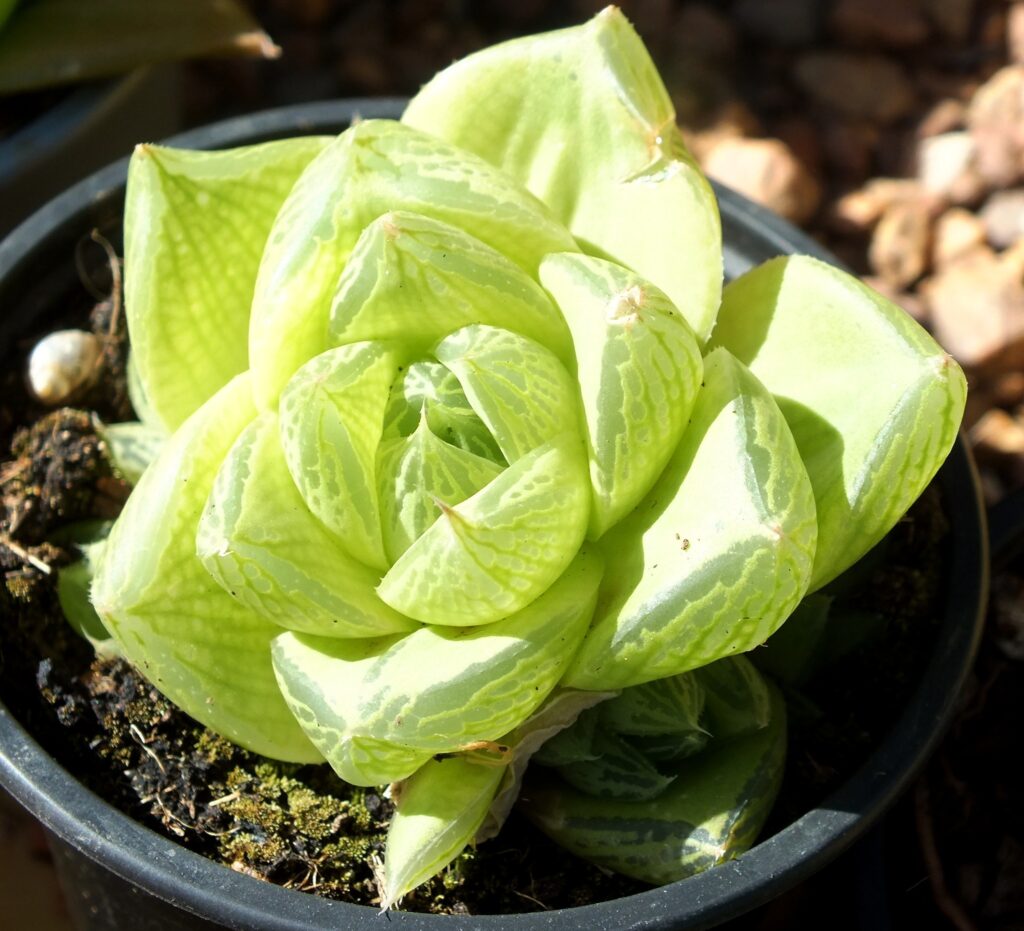
Haworthia cymbiformis is a case in point. According to the system, if a variety is recognised and described, automatically every other variant becomes the variety cymbiformis. This creates an amazing treadmill and we then have to accommodate all those other variants in a practical working system. How does one deal with this when, apart from the problems of one complex system, H. cymbiformis is inextricably tied into H. cooperi.
My conclusion has to be that the system does not work. While there is the fancy intellectual footwork in the upper echelons of botany, there is also the difficulty of dealing with countless variations that are conveniently set aside because they do not fit. Looking at my own attempts to deal rationally with H. cymbiformis and its variants boggles my mind. How did I set the name ‘planifolia’ aside, or renege on an earlier decision to abandon the name ‘obtusa’, and subsequently change my mind again? No matter how one juggles these names, one is faced with the embarrassment of dealing with many more variants that are neither one nor the other of the names one does decide to recognise and use. Let us say that this picture above is typical of H. cymbiformis and then look at some others …
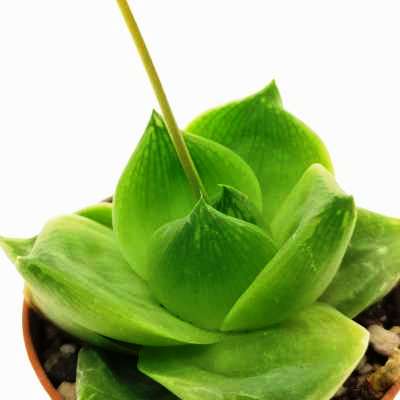
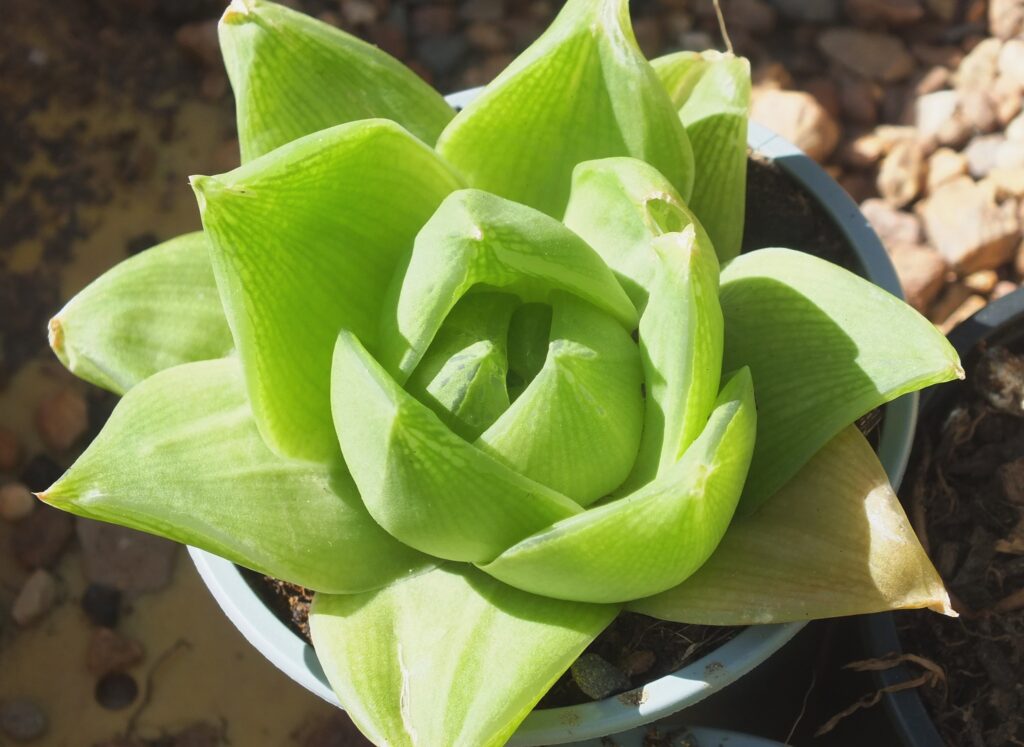
What I tried to do in Haworthia was establish what groups existed that satisfied some rational species definition in also geographic terms. So I abandoned many of the old names for that reason alone. “Planifolia”is a case in point. I could find no clear geographic evidence and recognised the difficulty of actually separating cymbiformis and planifolia as distinct groups. But it is a subjective decision as so many taxonomic decisions are despite the desperate efforts to hide the doubt and the justify them as objective. as you can see from the two pictures, “planifolia’ has broader and flatter leaves rather than the keeled “boathull” shape of cymbiformis. I did not intend that names in synonymy be abandoned and did suggest that such names be considered available for use by collectors and growers.
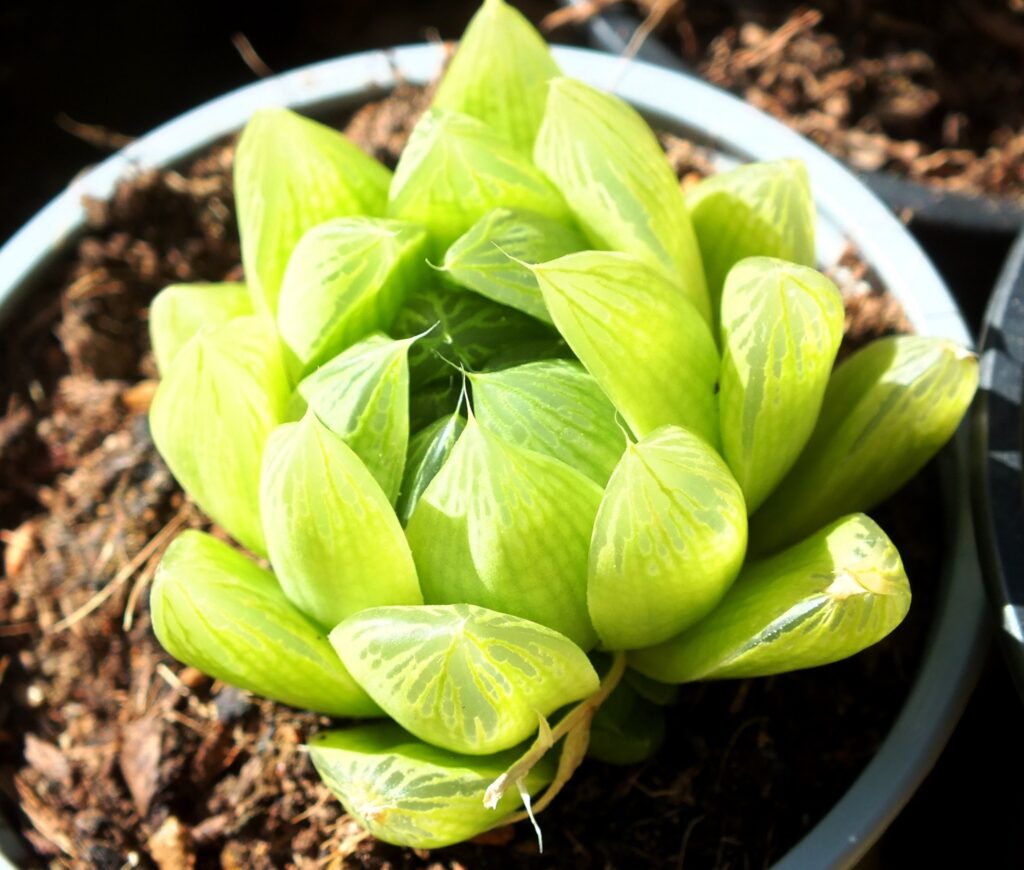
Quote … ”The location of this note is a powerful reminder that distinctions between species are highly blurred and that alternative solutions are possible”. This answers my question of the previous post and it comes from Haworthia Revisited after tortuous explanations of the varieties in H. cymbiformis. Here is a photo of a cymbiformis in cultivation that could have come from anywhere, including Plutos Vale where H. cooperi var. tenera (?) and H. cymbiformis var. incurvula obfuscate the difference between the two species.
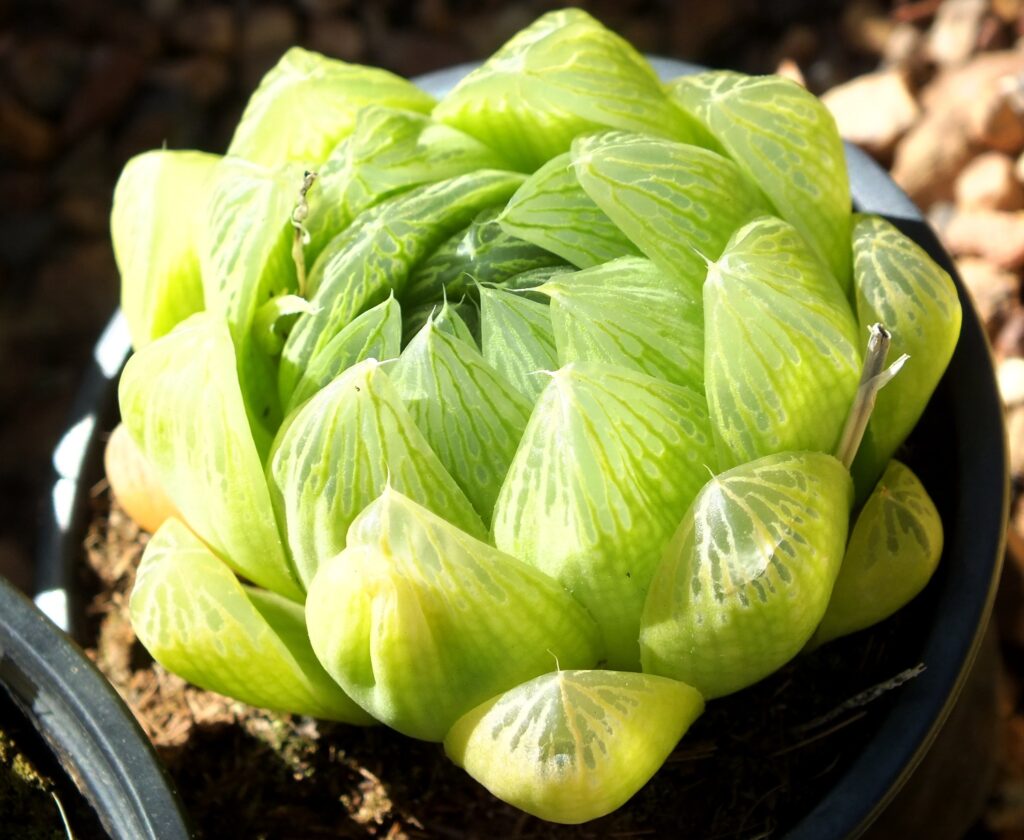
At this late stage in life, I think an honest submission is called for. My life experience with identification of plants is that botanical classification and naming is largely delusional. Taxonomists name things in relation to their experience and seldom get to truly know all the species and variants. Herbarium cupboards hide scores of unusual specimens filed in doubtful places and many unidentified. I have found it very difficult to deal with variations as this posted picture demonstrates. It is a variant of H. cymbiformis that I initially recognised as var. umbraticola in the belief that it substituted for the name var. obesa. At the time I thought that was a name confused with H. cooperi. I did eventually change my mind and recognise obesa as a variant of cymbifomis. But the fact is that cymbiformis is a riverine cliff hanger versus cooperi that is a grassland element.
There fall is a large spectrum of populations occur in different habitats that are neither one nor the other. This situation is also represented in H. retusa and H. turgida where there is further complexity in plant appearance and behavioural character viz. H. mirabilis, H. pygmaea, H. mutica, H. emelyae and more. These are realities of plant classification that taxonomists seem to dismiss or are unable to recognise. Things simply do not follow the tidy branching nature that fancy evolutionary theory, cladograms, phylograms and revisions illustrate.
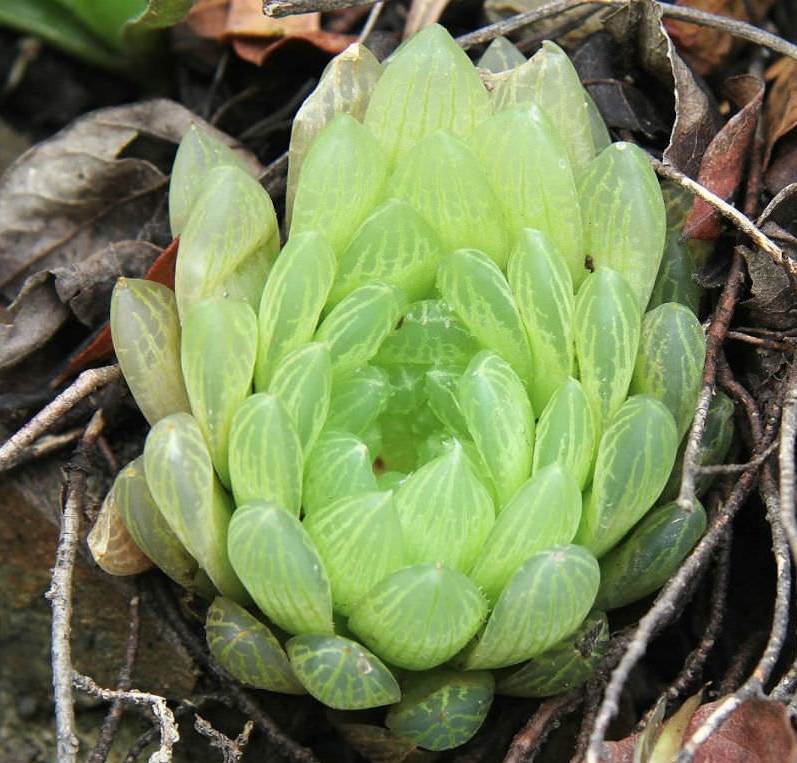
This is now from an area in the Prince Alfed’s Pass where H. cymbiformis var. transiens, and H. planifolia var. translucens originated. It is to the west of general distribution of where more characteristic H. cymbiformis and H. cooperi occur. But my experience of these two species is that anything that resembles H. cymbiformis is actually a habitat derived variant of H. cooperi, which includes what was a very complex set of variants that I had treated as yet another species viz. H. gracilis. ♦
